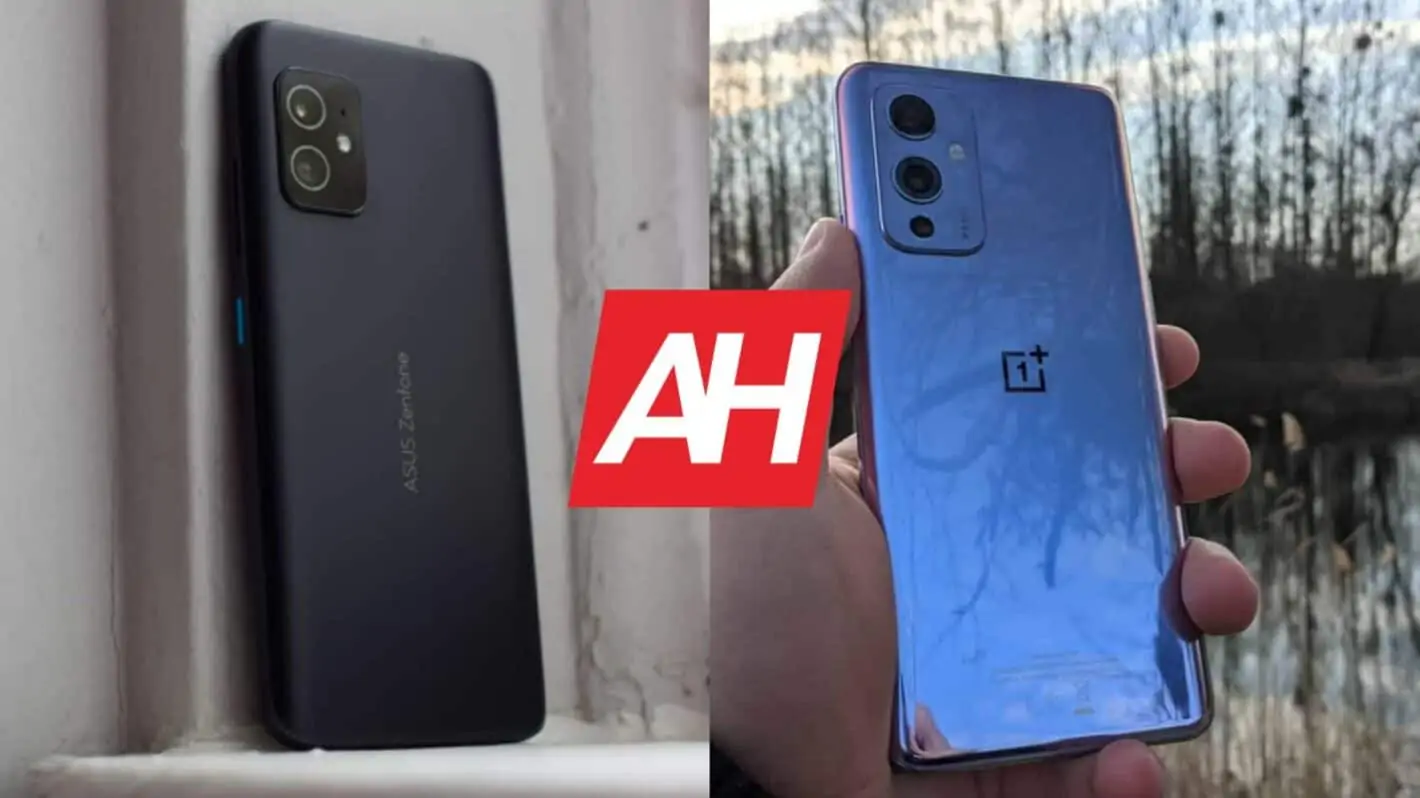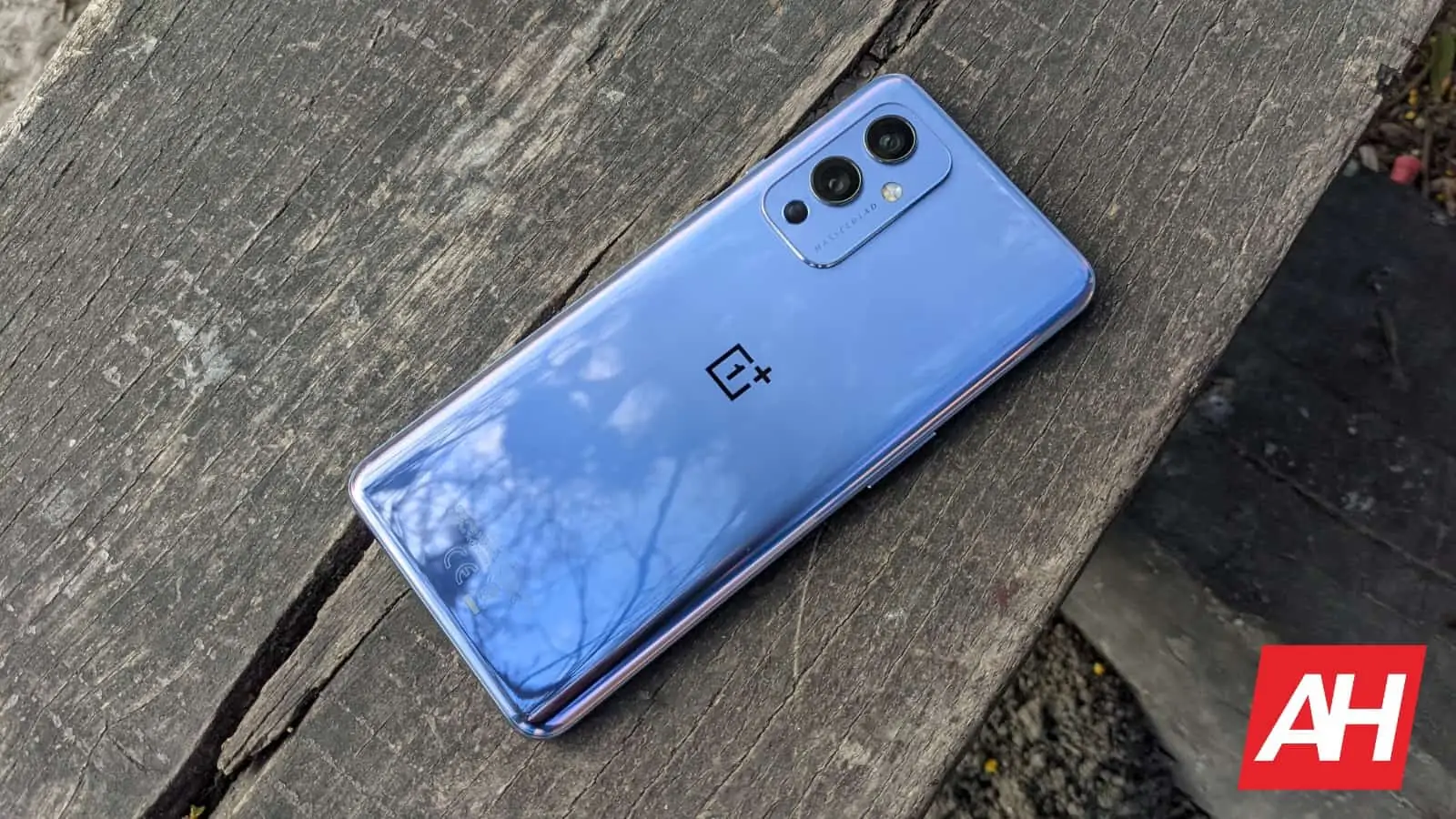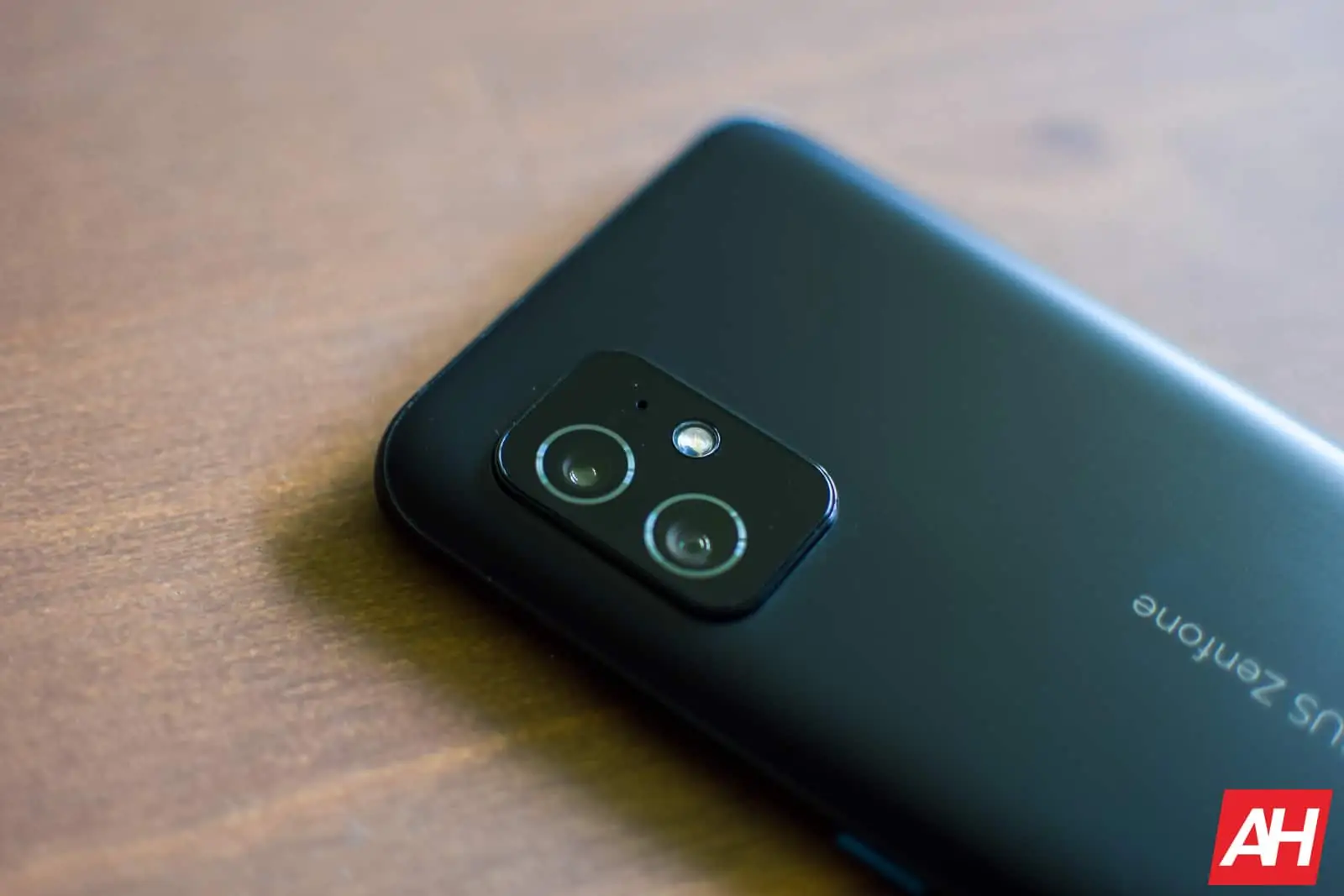We’ve already compared the ASUS ZenFone 8 vs OnePlus 9 Pro, and we’ll now do the same but for the smaller OnePlus 9. The ASUS ZenFone 8 is one of the most prominent compact Android flagships in the market. It makes sense to compare it to the OnePlus 9, as that is a flagship-grade phone, but it’s a bit smaller than the OnePlus 9. Do note that the OnePlus 9 is still a lot larger than what ASUS has to offer though, so this is not exactly a comparison between compact phones.
Both of these two phones are quite compelling in their own regard. Even their price tags do look somewhat compelling in comparison to many other flagships on the market. These two devices do have some things in common when it comes to specs, while they don’t exactly look a whole lot different either. That being said, we’ll kick things off by comparing their specs, and then move to other categories. Let’s start comparing the ASUS ZenFone 8 vs OnePlus 9.
Specs
| ASUS ZenFone 8 | OnePlus 9 | |
| Screen size | 5.9-inch fullHD+ Super AMOLED flat display (120Hz refresh rate) | 6.55-inch fullHD+ AMOLED display (120Hz refresh rate) |
| Screen resolution | 2400 x 1080 | 2400 x 1080 |
| SoC | Qualcomm Snapdragon 888 | Qualcomm Snapdragon 888 |
| RAM | 6GB/8GB/16GB | 8GB/12GB (LPDDR5) |
| Storage | 128GB/256GB (UFS 3.1); non-expandable | 128GB/256GB (UFS 3.1), non-expandable |
| Rear cameras | 64MP (f/1.8 aperture, 0.8um pixel size, 26mm lens, PDAF, OIS) 12MP (ultra-wide, f/2.2 aperture, 112-degree FoV, 14mm lens, 1.4um pixel size, dual pixel PDAF) |
48MP (Sony IMX689, f/1.8 aperture, 1.12um pixel size 48MP images, 2.24um pixel size 12MP images (4-in-1 binning), 7P lens, EIS) 50MP (ultra-wide, Sony IMX766, 7P lens, f/2.2 aperture, Freeform Lens) 2MP (monochrome) |
| Front cameras | 12MP (f/2.5 aperture, 28mm lens, 1.22um pixel size, dual pixel PDAF) | 16MP (Sony IMX471, 1.0um pixel size, EIS, Fixed Focus, f/2.4 aperture) |
| Battery | 4,000mAh, non-removable, 30W wired charging, reverse wired charging | 4,500mAh, non-removable, 65W wired charging, 15W wireless charging, reverse wireless charging |
| Dimensions | 148 x 68.5 x 8.9mm | 160 x 74.2 x 8.7mm (North America & Europe) 160 x 73.9 x 8.1mm (India & China) |
| Weight | 169 grams | 192 grams (North America & Europe) 183 grams (India & China) |
| Connectivity | 5G, LTE, NFC, Bluetooth 5.2, Wi-Fi, USB Type-C | 5G, LTE, NFC, Bluetooth 5.2, Wi-Fi, USB Type-C |
| Security | In-display fingerprint scanner (optical) | In-display fingerprint scanner (optical) |
| OS | Android 11 ZenUI 8 |
Android 11 OxygenOS 11 |
| Price | €599 / €669 / €799 | $729 / $829 |
| Buy | ASUS | OnePlus |
ASUS ZenFone 8 vs OnePlus 9: Design
The ASUS ZenFone 8 is made out of metal and glass. The OnePlus 9, on the other hand, combines plastic and glass. Its frame is made out of plastic, while you’ll find glass on the back. The phone definitely does not feel like it has a plastic frame though, so chances are not many people will be bothered by it. Both devices offer flat displays, and a display camera hole in the top-left corner.
Bezels are quite thin on both phones, while their rear camera setups are placed in almost the same spot. You’ll find them in the top-left corner. The ASUS ZenFone 8 has all of its physical buttons placed on the right side, while the OnePlus 9 sports them on both sides. They’re both curved on the back, towards the sides, and they do have a similar in-hand feel. They’re both quite slippery.
Do note that the ASUS ZenFone 8 is considerably smaller and lighter, so in that regard, they are different. The ZenFone 8 is much easier to use with one hand, and its slippery nature is not as big of a problem due to its size. Still, most of you will probably want to use a case with each phone. They both feel like quality devices, and if you’ve ever used a glass-made phone, you’ll know exactly what to expect here.
ASUS ZenFone 8 vs OnePlus 9: Display
The ZenFone 8 features a 5.9-inch fullHD+ (2400 x 1080) Super AMOLED display with a 120Hz refresh rate. Its panel gets quite bright, 1,100 nits is its peak brightness. This display is protected by the Gorilla Glass Victus, and it supports HDR10+ content. We’re looking at a 20:9 display aspect ratio here, in case you were wondering. The bezels around that display are not uniform, as the bottom one is a bit thicker than the rest.
The OnePlus 9, on the flip side, has a 6.55-inch fullHD+ (2400 x 1080) Fluid AMOLED display. This display gets just as bright at 1,100 nits peak brightness, and it’s also a 120Hz panel. It does support HDR10+ content, and it has the same display aspect ratio of 20:9. The Gorilla Glass 5 protects this display, while it’s a flat panel, just like the one on the ZenFone 8. The OnePlus 9’s bezels are not uniform either, as the bottom one is a bit thicker.
Both of these displays are really good. The two devices offer great fullHD+ panels here, both of which support high refresh rates. The ZenFone 8 does have a slight blue tint on it, but you can fix that via the settings. The colors are vivid on both displays, the blacks are deep, and the viewing angles are excellent. Thanks to their high refresh rate support, the scrolling is smooth, and both displays are a joy to use. There’s not much to complain about here, as they’re both more than sharp enough as well.
ASUS ZenFone 8 vs OnePlus 9: Performance
Both of these phones are admirable in the performance department. That’s not surprising, though, as they both come with flagship-grade specifications. Both of these phones are fueled by the Snapdragon 888 SoC. On top of that, they both include LPDDR5 RAM and UFS 3.1 flash storage. In combination with Android 11, and Android skins from their respective companies, both devices can provide excellent performance.
That goes for both regular, everyday tasks, and gaming, actually. They can open / close apps really fast. They’re excellent for consuming multimedia, while browsing is also a treat on both. High refresh rate displays only help things, as they make scrolling smoother, and also help when it comes to gaming. Basically anything you’d do on a regular basis will feel smooth on the two devices, and we also haven’t noticed any lag or anything of the sort. An occasional stutter was there, but that’s the case with pretty much every phone. And by ‘occasional’, we mean very rare, as it only happened several times.
Both phones offer plenty of gaming features. The ZenFone 8 even includes some ROG Phone gaming features. For those of you who don’t know, the ROG Phone series is ASUS’ series of gaming smartphones. If you’d like to process some video content via these two phones, they can handle that as well, with flying colors. They’ll perform such tasks in no time. There’s really nothing to complain about when it comes to performance, both phones excel in that regard.
ASUS ZenFone 8 vs OnePlus 9: Battery
The ASUS ZenFone 8 includes a 4,000mAh battery, while the OnePlus 9 Pro offers a 4,500mAh battery pack. Both of these phones offer good battery life, but they’re not amongst the best in that regard. Truth be said, both phones can reach 6 hours of screen-on-time under specific usage. If you’re gaming a lot, those numbers will be significantly lower. The same goes for constant downloading, and other actions that affect battery life.
On average, we were at about 5.5 hours of screen-on-time with both phones. You can get more if you’re very careful, but… that’s about what you can expect. That’s not bad by any means, but it’s not great either. Some phones out there, like the Galaxy S21 Ultra and Pixel 5, offer a lot better battery life. You can improve battery life further if you switch to a 60Hz refresh rate, but chances are not many of you will do that.
The good news is, both of these phones support fast charging. Truth be said, the OnePlus 9’s charging is considerably faster. It offers 65W wired charging, compared to 30W wired charging on the ZenFone 8. You can recharge the OnePlus 9 up to 100-percent (from 1%) in 29 minutes, while it will take the ZenFone 8 25 minutes to reach a 60-percent charge. The OnePlus 9 also supports wireless charging (15W) in the US and Europe, while the ZenFone 8 does have support for reverse wired charging.
ASUS ZenFone 8 vs OnePlus 9: Cameras
The ASUS ZenFone 8 includes two cameras on the back, while the OnePlus 9 has two back there. Both devices include wide and ultra-wide cameras, while the OnePlus 9 also has a monochrome one. Both companies issued quite a few updates since the two devices launched, and both camera setups are quite capable. The ZenFone 8 managed to surprise us with its camera quality from the get-go, while OnePlus managed to fix most issues with the OnePlus 9’s camera performance.
Both phones can capture really detailed, and sharp images during the day. The dynamic range is really good on both, while the colors are nice as well. Neither phone oversaturates colors, nor do pictures look bland on either. The white balance is also spot on. Ultra-wide cameras are quite capable, though the OnePlus 9’s does perform a bit better, and it distorts images less. They’re both really good in low light as well, though the ZenFone 8 has an edge in such conditions. It manages to provide sharper images, which are better balanced overall.
Audio
Both of these phones come with stereo speakers, though the ZenFone 8’s sound a bit better. ASUS really managed to do an excellent job with these speakers, as the sound is rich and loud. The OnePlus 8 is not far behind in that regard, as it also offers excellent speakers. You’ll be happy with both setups, to be quite honest. They sound good across the spectrum and you won’t notice any major issues.
It is worth noting that the ZenFone 8 does offer a 3.5mm headphone jack, while the OnePlus 9 does not. The ZenFone 8 is one of the few flagship smartphones to still offer a headphone jack. No matter what connection you use for headphones, you’ll get good output from both phones. Your headphones need to be good enough in order to provide good sound, though, needless to say. Don’t expect miracles in that regard, and you’ll be happy with the output.



